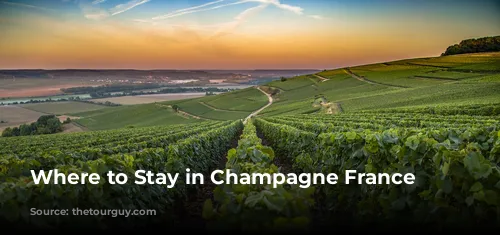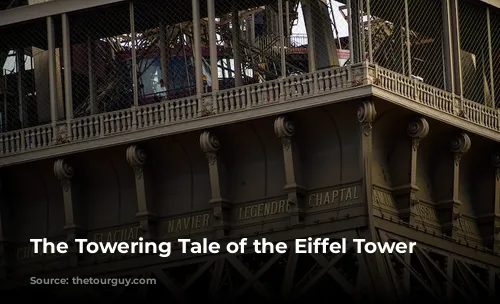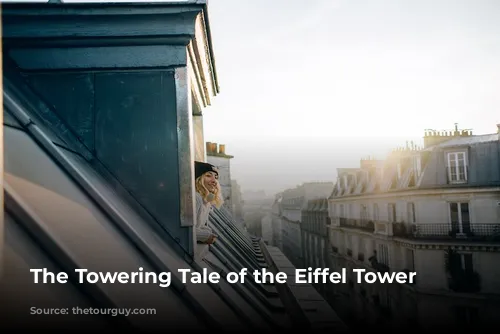The Eiffel Tower, a symbol of Paris and a marvel of engineering, stands tall as a testament to human ingenuity. But its journey from concept to icon was anything but straightforward.
A Bridge to a Tower: The Early Life of Gustave Eiffel
Gustave Eiffel, a French civil engineer and architect, began his career working for a railroad company. His first major project was a massive iron bridge spanning the Garonne River in Bordeaux. This 500-meter behemoth was a crucial link between Paris and Bordeaux. Sadly, it was destroyed during World War II but was rebuilt by Gustave’s grandson in 2012. This project marked the beginning of a life dedicated to metal structures, particularly for railways, as his career progressed.
From Train Station to Statue of Liberty
Eiffel’s first significant design work was the Budapest-Nyugati railway station in Hungary, a project he undertook independently. He established a company in Paris with Théophile Seyrig, another prominent architect, and built a stunning station as a terminus for the Vienna-Budapest line. The design was innovative, showcasing Eiffel’s growing passion for incorporating metal into structures, creating a captivating facade for the station.
In 1879, Eiffel dissolved his partnership with Seyrig and founded his own company. This paved the way for his involvement in another iconic landmark: the Statue of Liberty. He was contacted by Aguste Bartholdi, the statue’s designer, and tasked with crafting the engineering marvel that would support its weight and withstand strong winds. The Statue of Liberty was built in France, disassembled, shipped to New York, and reassembled, a feat of engineering for its time.
The Eiffel Tower: From Concept to Icon
While Gustave Eiffel is the name associated with the Eiffel Tower, the tower’s design actually originated from two of his engineers: Émile Nouguier and Maurice Koechlin. They were inspired by a wooden observation tower, the Latting Observatory, built in New York in 1853. The Latting Observatory, though short-lived, left a lasting impression on Eiffel’s team.
Initially, Eiffel was unimpressed by his engineers’ initial sketches. However, he recognized their potential and encouraged them to make improvements for the upcoming 1889 World’s Fair. Months later, Eiffel presented the revised design at an art exhibition, receiving mixed reactions. To secure funding and support, he began actively promoting his tower among local and national authorities.
His efforts finally gained momentum when President Jules Grévy announced a competition for a metal structure to be the centerpiece of the World’s Fair. The competition, seemingly biased towards Eiffel’s design, ultimately paved the way for the construction of the Eiffel Tower.
Building a Monument: The Eiffel Tower’s Construction
Construction commenced on January 28, 1887, on the Champ de Mars, and, surprisingly, the world’s tallest structure was completed in just 27 months. The intricate yet straightforward construction involved four massive concrete slabs supporting the tower’s base. Each of the tower’s four legs rises with arches that create the first, second, and third observation decks.
Elevators were installed on each leg, offering a convenient way to reach the upper levels, while a staircase provided an option for those seeking a more challenging ascent. On March 31, 1889, the Eiffel Tower was officially inaugurated, with Eiffel leading government officials and press to the top, proudly raising the French tricolor amidst a 25-gun salute.
Illuminating the City of Lights
Paris is known as the City of Lights, a title that predates the Eiffel Tower. However, the tower has become a beacon of light, showcasing the evolution of illumination technology. Initially adorned with thousands of gas lights, the tower later embraced the brilliance of electric bulbs in 1900. Throughout the 20th century, the tower’s lighting system underwent further improvements, culminating in the installation of 336 sodium-vapor lights in 1985.
This system, designed by Pierre Bideau, transformed the tower from being lit by its surroundings into a radiant source of light. Adding to its splendor, over 20,000 sparkling bubbles, installed in 2000, shimmer for five minutes every hour, from dusk until 1 am, adding a touch of magic to the iconic structure.



